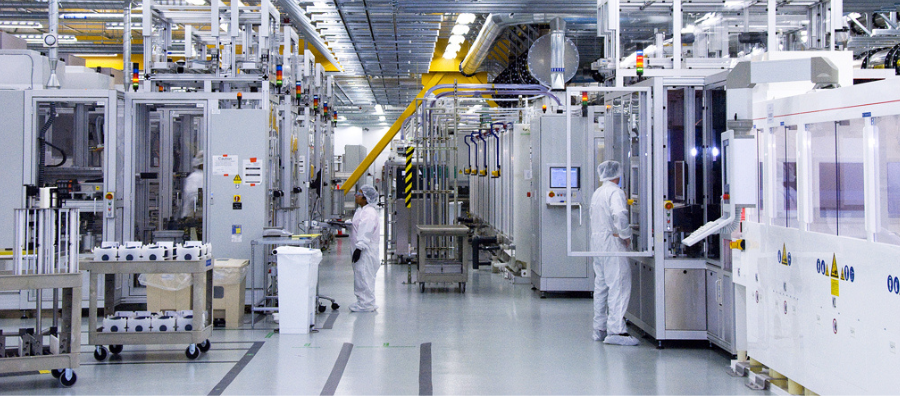
Learn how test and measurement can aid the transformation of electromechanical facilities into energy conserving powerhouses, saving the manufacturer valuable time and money in the process.
With the rising cost of energy an ever-present issue across the country, energy efficiency is now more important than ever. Extra emphasis has been placed on energy conservation, and manufacturers can ill-afford to waste even the smallest shred. Energy efficiency has many benefits, both for the manufacturer and the world, whether that be protecting the environment, or even extending the lifespan and productivity of expensive equipment.
This article aims to explore ways in which preventative action can be taken using investigative tools, to start reducing energy wastage, allowing for the more practical utilisation of available energy.
The Current Dilemma
With energy production accounting for around two-thirds of global greenhouse-gas emissions, and experts predicting that electricity demand will rise by more than 40% in 2030, there has been lots of discourse over how to best approach the climate issue. The COP21 conference in Paris 2015 saw pledges made to limit greenhouse-gas emissions until the end of the century, but studies show that we are on course to break that by 2030.
With a solution in mind, the International Energy Agency’s (IEA) newly-formulated “Bridge Strategy” has been designed to improve the energy efficiency of the industry. As well as this, the International Organisation for Standardisation (ISO) has created the IS0 50001 standard, which is an optional plan which helps manufacturers improve their energy efficiency. ISO 50001 suggests that manufacturers review their current energy usage, and puts plans in place to save money whilst also conserving crucial energy.
Finding a Solution
With electrical power usage constantly changing, energy waste is now becoming commonplace. Uncovering the source of this energy waste will not only allow companies to develop strategies to lessen it, but will also paint a picture of whether energy consumption for the month was the standard, or whether it was excessive. Benchmarking the current state of electricity consumption across a facility is one of the first steps of arranging an energy management system. Conducting this survey allows for money and energy saving practices to be implemented, and allows for the tracking of areas that are contributing towards usage whilst outside of the main assets.
Whilst this survey will only reveal how to change the most obvious issues, load and power quality studies will need to be ran on critical assets. This can be done with a Power Quality Analyser, such as the Fluke 1777 Three-Phase Power Quality Analyser, which is an industry-leading instrument that is easy-to-use and offers a simplified reporting platform.
One example of the main systems that should be evaluated by a PQA includes electric motors, which should be analysed as three factors:
- Motor Efficiency Class – replacing a ‘lower-class’ motor with a more efficient one could help save money in the long run, costing an average of just 1% of the total costs over a 20-year motor life span.
- Motor Loading – motor loading means how ‘well-matched’ the motor capacity and the mechanical load are. If the motor is too small or too big for the task at hand, it may cause low energy efficiency.
- Motor Derating - this means that the motor has to be used below its specified power. If this is ignored it could cause early failures and reduced lifetime the motor’s lifetime.
You can also view the overall power quality health with the Fluke 1777, which is clearly displayed on Image 1. A thermal camera can also be used to analyse imbalance, by highlighting which motor is overheating and causing issues. The 1777 can then display these unbalanced currents, as shown in Image 2, which allows for the user to make changes to correct these issues.

Image 1

Image 2
A vibration tester, such as the Fluke 805FC Vibration Tester, can identify the vibration levels present, which allows a clearer insight into bearing wear, the location of the fault, and the severity level of it. Misalignment often causes energy wastage, and the 805FC can help pinpoint this issue.
Logging the Most Active Hours
Determining when machinery is at its most active is a great step to take towards energy efficiency, This allows for the machinery’s operating times to be reshuffled in order to find a more efficient time slot for operation. Using the aforementioned PQA allows you to check how much power is being used when the machine is not active, thus allowing for changes to be made to improve efficiency.
A Thermal Imaging Camera could also be used to investigate machinery that will not turn on when scheduled, saving time and money in the future by determining whether new machinery should be installed. It could make sense financially to replace the motor altogether.
Final Thoughts
Recovering electromechanical energy wastage is crucial in manufacturing facilities as it helps save money and time, whilst also ensuring that it can be used for something much more efficient.
You can browse our range of smart products to find the best tools for electromechanical energy conservation. You can also contact our sales team on 0113 248 9966, or by emailing sales@test-meter.co.uk.
